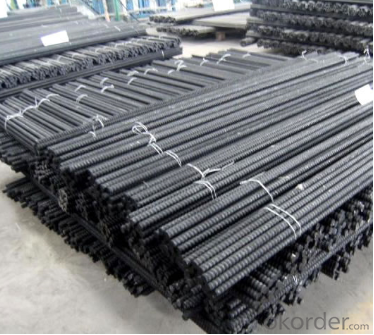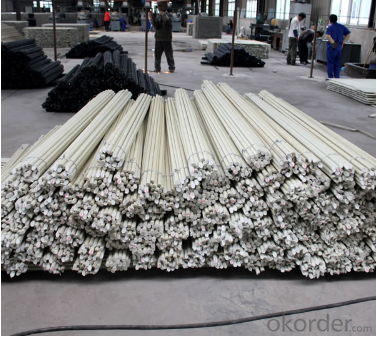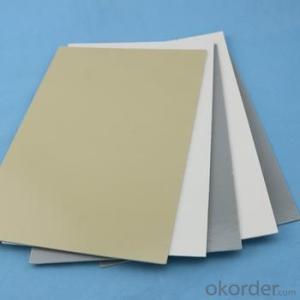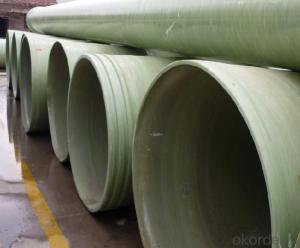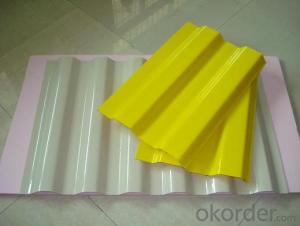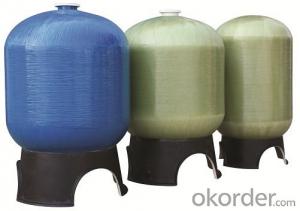FRP Bolt Glass reinforced plastic anchor rod
- Loading Port:
- Nanjing
- Payment Terms:
- TT OR LC
- Min Order Qty:
- 100 set
- Supply Capability:
- 100000 set/month
OKorder Service Pledge
OKorder Financial Service
You Might Also Like
Specification
Bolt support in coal mines in recent years, railway, highway, water conservancy and urban construction engineering project, at the same time, the rapid development in the glass fiber reinforced plastic (GRP) anchor applied correspondingly, GRP anchor of safety and operability are far more than the metal bolt now used by coal mining, and is gradually replacing the traditional metal bolt, is the new alternative metal bolt supporting materials. Its advantages:
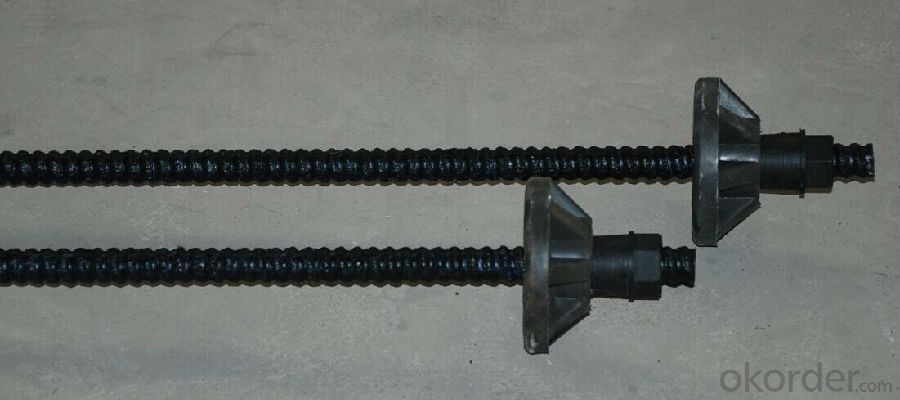
1, high strength, easy cutting rod body: the tensile strength of glass fiber reinforced plastic anchor rod is better than that of ordinary steel, higher than 20% of the steel bar, the same specification and good fatigue resistance performance, light weight, only for the same volume of steel 1/4. Its material is a composite material, easy cutting, can protect the coal winning machine cutting head;
2, safety performance is good, explosion-proof anti-static: thermal conductivity, conductive, flame retardant, antistatic, collision won't produce sparks, through the formula change and metal for tunnel safety construction is very good, especially suitable for gas concentration area;
3, Gao Jiangnai corrosion, high bearing capacity, tensile resistance is strong, the diameter of the rod body strength is better than that of rebar bolts, as a support for a long time, can resist erosion of chloride ions and low PH solution, especially the resistance to corrosion of carbon compounds and chlorine compounds is better.
4, material binding force strong: closer to the cement thermal expansion coefficient compared with steel, so the rod body with concrete grip of stronger;
Light 5, can design sex is strong, easy to operate, stable modulus of elasticity, thermal stress under the size stability, heat bending shape can be arbitrary shape, and weight is only 1/4 of coequal norms metal bolt, can be used in tight Spaces such as tunnels and mines is convenient, make it easier for the construction, reduce labor intensity;
6, construction is convenient, can produce all kinds of different cross section according to the requirement of the user and the length of the standard and non-standard, non-metallic drawstring tie available at the scene, the operation is simple.

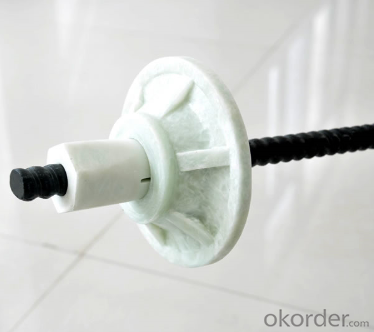
Glass reinforced plastic anchor rod production equipment, our company is using the company independent research and development, after more than 10 years of market recognition, production research and development department improve MYC - 1200 pultrusion equipment, with completely independent intellectual property rights, more than 20 supporting patent technology, is a domestic initiative.

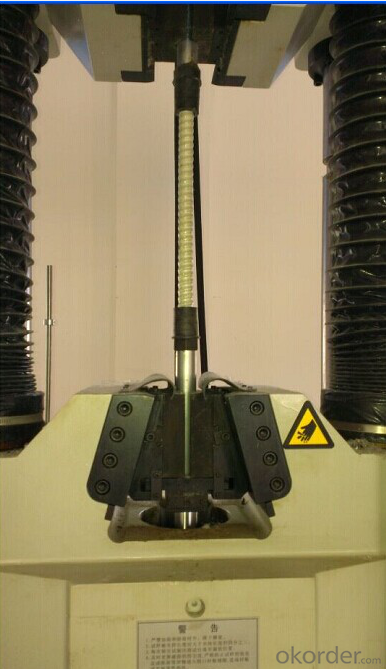
So far, our company has formed glass reinforced plastic anchor rod of raw materials, production equipment, glass fiber reinforced plastic anchor rod products production and sales of the whole industry chain, pultrusion technology, production, processing and application of full thread glass reinforced plastic anchor rod, the glass fiber content as high as 80%, at the same time because of pultrusion technology of prestressed effect, can greatly improve the strength of glass fiber reinforced plastic anchor rod body, tensile strength can be big, to ultra high strength bolt corresponding technical indicators. And can be installed directly nut, because the rod surface area significantly increase can significantly increase the anchorage rod body strength and tensile strength; Tray, nut supporting with tray, nut of invention patent.
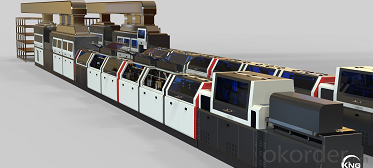
- Q: Can FRP pultrusion profiles be used in the renewable energy and solar power industry?
- Yes, FRP (Fiber Reinforced Polymer) pultrusion profiles can be used in the renewable energy and solar power industry. These profiles offer several advantages such as high strength, durability, corrosion resistance, and lightweight properties, making them suitable for various applications in the industry. FRP pultrusion profiles can be used for structural components, support structures, mounting systems, and other applications in solar panels, wind turbines, wave energy devices, and other renewable energy systems.
- Q: Can FRP pultrusion profiles be customized according to specific requirements?
- Yes, FRP (Fiber Reinforced Polymer) pultrusion profiles can be customized according to specific requirements. Pultrusion is a manufacturing process that involves pulling continuous fibers through a liquid resin bath, then through a heated die to cure the resin and form the desired shape. This process allows for great flexibility in design and customization. The customization options for FRP pultrusion profiles include various dimensions, shapes, colors, and surface finishes. The dimensions can be tailored to meet specific length, width, and thickness requirements. The shapes can range from basic geometries like rectangular or round profiles to more complex designs with custom cross-sections. In terms of color, FRP pultrusion profiles can be pigmented during the manufacturing process to achieve the desired color or can be painted or coated afterwards. This allows for matching specific color requirements or ensuring compatibility with existing structures or products. Furthermore, surface finishes can be customized to achieve desired properties such as increased slip resistance, UV resistance, or fire resistance. Surface treatments like sanding, coating, or adding special additives can be applied to meet specific performance requirements. Overall, FRP pultrusion profiles offer a high level of customization to meet specific project or application needs. They are versatile, lightweight, corrosion-resistant, and have excellent strength-to-weight ratios, making them suitable for various industries such as construction, transportation, infrastructure, and aerospace.
- Q: Can FRP pultrusion profiles be used in architectural or decorative applications?
- Certainly, architectural or decorative applications can definitely make use of FRP pultrusion profiles. FRP, an acronym for Fiber Reinforced Polymer, is a composite material that combines sturdy fibers like glass or carbon with a polymer resin matrix. This combination results in a material that is lightweight, durable, and resistant to corrosion, making it ideal for a variety of purposes, including architecture and decoration. The versatility of FRP pultrusion profiles lies in their ability to be manufactured in various shapes and sizes, making them highly adaptable for architectural and decorative uses. These profiles can be utilized to construct visually appealing structures such as columns, beams, and facades, all of which enhance the aesthetic appeal of buildings. Furthermore, FRP pultrusion profiles can be fabricated to imitate the appearance of other materials, such as wood or metal, enabling the creation of decorative elements that seamlessly blend into the overall design. Moreover, FRP pultrusion profiles offer several advantages over traditional materials commonly employed in architecture and decoration. They are lightweight, making them easier to handle and install, reducing labor costs. Additionally, they exhibit high resistance to corrosion, weathering, and UV radiation, ensuring long-lasting performance in outdoor applications. Furthermore, FRP profiles can be customized to meet specific design requirements, including color, texture, and surface finish, offering endless possibilities for creative expression. In summary, FRP pultrusion profiles are a viable choice for architectural and decorative applications. Their lightweight, durable, and customizable nature makes them suitable for a wide range of design needs, while their corrosion resistance guarantees longevity and low maintenance. Whether it is for structural support or decorative embellishments, FRP pultrusion profiles are an excellent option for enhancing the aesthetics and functionality of architectural and decorative projects.
- Q: Are FRP pultrusion profiles resistant to termites or other pests?
- Yes, FRP (Fiber Reinforced Polymer) pultrusion profiles are highly resistant to termites and other pests. The composition of FRP, which includes resin and glass fibers, makes it an inhospitable material for pests. Unlike wood, FRP does not provide a food source or favorable conditions for termites or other pests to thrive. Therefore, FRP pultrusion profiles are an excellent choice for applications where resistance to pests is required.
- Q: Can FRP pultrusion profiles be used in agricultural applications?
- Indeed, FRP pultrusion profiles are applicable in the field of agriculture. Renowned for their remarkable strength-to-weight ratio, resistance to corrosion, and durability, FRP pultrusion profiles are an ideal choice for a variety of agricultural uses. One common utilization of FRP pultrusion profiles in agriculture is the construction of livestock enclosures, encompassing fences, gates, and pens. These profiles possess outstanding resistance to weather conditions, chemicals, and degradation caused by UV rays, ensuring their long-lasting performance in outdoor environments. Furthermore, their lightweight composition facilitates ease of handling and installation. Moreover, FRP pultrusion profiles find application in the production of agricultural equipment and machinery. They can be employed for structural components, such as beams and supports, as well as functional parts like handles, brackets, and covers. The impressive strength of FRP profiles enables them to withstand heavy loads and challenging operating conditions, while their resistance to corrosion guarantees their longevity in corrosive surroundings such as fertilizer storage areas or livestock waste management systems. Additionally, FRP pultrusion profiles can be utilized for irrigation systems in agriculture. Their non-conductive nature renders them perfect for situations requiring electrical insulation, such as the creation of irrigation pipes or channels. Furthermore, the corrosion resistance of FRP profiles ensures their ability to endure exposure to water, chemicals, and fertilizers frequently employed in agricultural irrigation. To summarize, FRP pultrusion profiles exhibit exceptional suitability for agricultural applications due to their high strength, resistance to corrosion, and durability. Whether employed in livestock enclosures, agricultural machinery, or irrigation systems, FRP profiles offer numerous advantages that position them as a reliable choice within the agricultural industry.
- Q: Are FRP pultrusion profiles impact resistant?
- Yes, FRP (Fiber Reinforced Polymer) pultrusion profiles are known for their high impact resistance. The combination of strong reinforcing fibers and a polymer matrix makes them highly durable and able to withstand significant impact forces without breaking or deforming.
- Q: Can FRP pultrusion profiles be used in the construction of wind turbine blades?
- Yes, FRP (Fiber Reinforced Plastic) pultrusion profiles can be used in the construction of wind turbine blades. These profiles offer high strength-to-weight ratio, excellent corrosion resistance, and can be custom-designed to meet the specific requirements of wind turbine blade construction. Additionally, FRP pultrusion profiles provide flexibility in design and can withstand the demanding conditions of wind turbine operation, making them a suitable choice for blade construction.
- Q: What are the typical load-bearing capacities of FRP pultrusion profiles?
- The typical load-bearing capacities of FRP (Fiber Reinforced Polymer) pultrusion profiles vary depending on various factors such as the specific design and configuration of the profile, the type and quality of the fibers used, and the manufacturing process employed. However, generally speaking, FRP pultrusion profiles have high strength-to-weight ratios and can offer significant load-bearing capacities. The load-bearing capacities can range from a few hundred pounds to several thousand pounds, depending on the size and cross-sectional shape of the profile. For example, smaller FRP pultrusion profiles with rectangular or square cross-sections may have load-bearing capacities in the range of 500 to 2,000 pounds, while larger profiles with more complex shapes, such as I-beams or channels, can have load-bearing capacities exceeding 5,000 pounds or more. It is important to note that the load-bearing capacities of FRP pultrusion profiles can also be influenced by factors such as the temperature and environmental conditions in which they are used, as well as any additional reinforcement or support structures that may be employed. Therefore, it is crucial to consult with manufacturers or engineers who specialize in FRP pultrusion to obtain accurate and specific load-bearing capacity information for a particular application.
- Q: Are FRP pultrusion profiles resistant to sulfuric acid?
- FRP pultrusion profiles display a notable resistance to sulfuric acid and this corrosion resistance is a key advantage they hold over traditional materials like steel or concrete. Sulfuric acid, known for its highly corrosive nature, poses no threat to FRP pultrusion profiles due to the inherent properties of the composite materials used in their construction. The primary reason behind the corrosion resistance of FRP profiles lies in the resin matrix that encases the reinforcing fibers. The commonly utilized resins in pultrusion, namely polyester, vinyl ester, and epoxy, exhibit remarkable chemical resistance, including resistance to sulfuric acid. However, it is essential to acknowledge that the resistance of FRP pultrusion profiles to sulfuric acid can vary based on multiple factors. The concentration and temperature of the acid, as well as the specific resin formulation employed in the profile, can impact the overall resistance. In scenarios involving highly concentrated acid or elevated temperatures, it is advisable to consult the manufacturer or supplier to ensure that the specific FRP profile meets the necessary resistance requirements. On the whole, FRP pultrusion profiles offer a high level of resistance to sulfuric acid, making them apt for a wide range of applications in industries where this corrosive substance may be present, such as chemical processing, wastewater treatment, or mining.
- Q: Can FRP pultrusion profiles be used in the construction of stadium seating?
- Yes, FRP pultrusion profiles can be used in the construction of stadium seating. FRP (Fiber Reinforced Polymer) pultrusion profiles offer high strength, durability, and corrosion resistance, making them a suitable choice for stadium seating applications. These profiles can be customized to meet specific design requirements and provide a lightweight alternative to traditional materials like steel or concrete.
Send your message to us
FRP Bolt Glass reinforced plastic anchor rod
- Loading Port:
- Nanjing
- Payment Terms:
- TT OR LC
- Min Order Qty:
- 100 set
- Supply Capability:
- 100000 set/month
OKorder Service Pledge
OKorder Financial Service
Similar products
Hot products
Hot Searches
Related keywords








